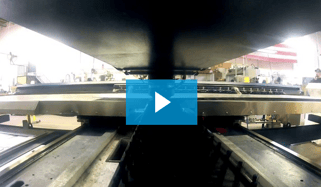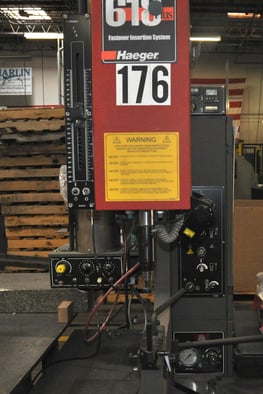 Almost everyone has heard that old nugget of wisdom, “less is more,” many times throughout life. In many cases, this is something you get told as you’re being handed a smaller portion of something than you’re used to getting, with the intent of placating you.
Almost everyone has heard that old nugget of wisdom, “less is more,” many times throughout life. In many cases, this is something you get told as you’re being handed a smaller portion of something than you’re used to getting, with the intent of placating you.
However, there are times when less truly can be more of something. Take, for example, manufacturing processes. In manufacturing, finding ways to streamline your process often means less expenses, and more rewards.
So, how can you streamline your manufacturing process, and what are the benefits? Here are a few examples of ways to make more with less in manufacturing:
Reduce Process Complexity to Make Parts More Quickly
One of the biggest hurdles to productivity is an overcomplicated manufacturing process. Sometimes, a company gets stuck doing things one way simply because that’s the way that process has always been handled, and it works (at least for the most part).
The search for continuous improvement often requires a company to leave its comfort zone in search of better solutions to old challenges.
For example, if there is an extraneous process in a production method, removing that process can save time and labor. Which processes are extraneous? That’s hard to say without an intimate knowledge of what you make and what your production process is.
A common solution is to replace several purpose-built wire baskets for individual parts finishing processes with one universal basket that is optimized for multiple processes. This reduces the time spent on moving parts from one process to another, as the whole basket load can stay together without needing to be unloaded and reloaded into a specialty basket.
Another way some manufacturers have streamlined their production process is to put multiple kinds of parts that are to be assembled into a single product through the finishing process together. This saves time at final assembly, as the requisite parts will all be together rather than in separate loads.
Reduce Reliance on Manual Labor to Increase Quality
 Factory automation has done wonders for the manufacturing industry. Where there were once dozens of workers getting severely injured each year, there are now machines doing the same work, only faster, with greater accuracy and safety than human workers.
Factory automation has done wonders for the manufacturing industry. Where there were once dozens of workers getting severely injured each year, there are now machines doing the same work, only faster, with greater accuracy and safety than human workers.
Less manual labor means investing more in updating automation, yes. But, it also means fewer lost-time safety incidents and workman’s comp claims, and more profits for your company as you fill orders faster.
For an example of how much safer factory automation can make your production process, consider Marlin Steel’s own history. At one point, Marlin was hemorrhaging money on workman’s comp claims, with several workers losing fingers, eyes, and other body parts to accidents involving manually shaping steel wire.
Switching to automated wire bending robots allowed workers to distance themselves from the dangerous labor. Now, workers can focus on managing production and finding ways to streamline processes and eliminate unnecessary production steps.
When Less is More Trouble
While streamlining production and finding ways to cut costs can be a good thing, there are times when less of something can mean more costs and trouble.
For example, skimping on critical production assets can actually increase your costs in the long run rather than save your company money.
Just last year, Marlin Steel had a customer who had two bids for a parts washing basket to use in their seaside factory location. For this company, the final decision was based largely on the final cost of the baskets. It was figured that since both designs fit their parts, either one would work equally well.
Much to this company’s chagrin, while the one bid was cheaper, that was because critical aspects of the job had been overlooked, such as the conditions that the baskets would be stored in. The issue is that, as a seaside production location, the interior of the factory was constantly exposed to salty sea air and moisture. The less expensive baskets did not account for this in their material choice, and they began to corrode quickly under the seaside conditions.
Soon, the baskets failed, leaving the company with a need to order yet another set of baskets to replace the faulty units, effectively doubling their cost. Here, the less costly basket ended up costing more than the more costly one in the long run.
So, while pursuing the “less is more” philosophy of manufacturing, keeping in mind what the likely outcomes of a change will be is incredibly helpful.
Need help streamlining your production process in a smart and efficient manner? Contact Marlin Steel’s team of engineers for more info here.


.gif)


